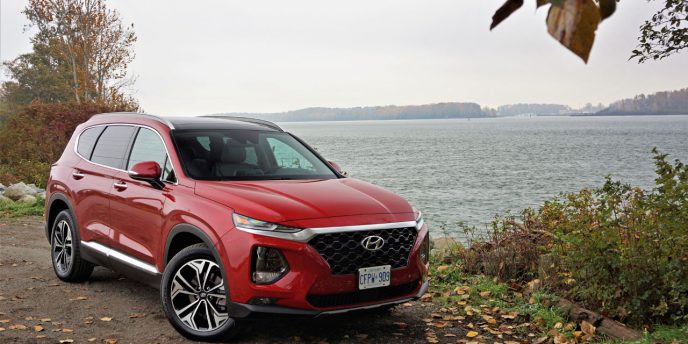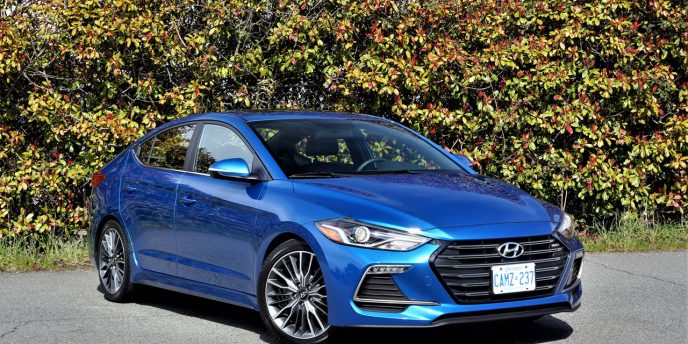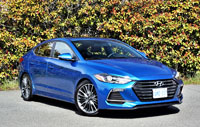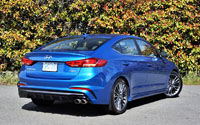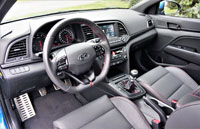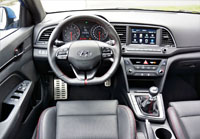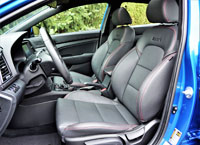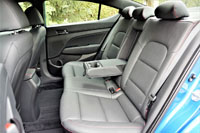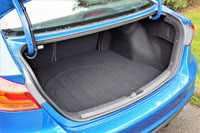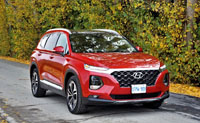
The Santa Fe is one of the crossover SUV sector’s most popular entries, and it’s entirely new for 2019. We’ve got it in our garage this week, and without saying too much we’re impressed.
First off, let’s clear up some confusion. The Santa Fe started life as more of a compact SUV than anything truly mid-size, but like so many other vehicles it has grown over the generations to the point that it now leans more towards mid-size than compact. Despite coming close to matching the length, width and height of a five-passenger mainstays like the Ford Edge, some industry insiders still call it compact and therefore muddle the marketplace, so I’m here setting the record straight.
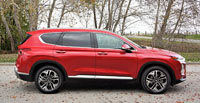
To be even more specific, at 4,770 millimetres (187.8 inches) long and 1,890 mm (74.4 in) wide the 2019 Santa Fe we’re testing here is a considerable 246 mm (9.7 in) longer than the current Ford Escape compact SUV yet only a fractional 9 mm (0.3 in) shorter than the Edge, while it’s 52 mm (2.0 in) wider than the former and only 38 mm (1.5 in) narrower than the latter. To be fair, the new Santa Fe is actually a full 70 mm (2.7 in) longer and 10 mm (0.4 in) wider than the outgoing model, this improving interior roominess. So while I’ve long considered the Santa Fe a mid-size crossover SUV, now we can all safely categorize as such and call it a day. This becomes even clearer when factoring the size of the three-row Santa Fe XL, which I’ll cover in a future review.
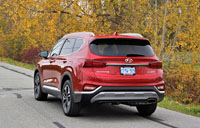
This being a Garage piece, I won’t go into too much detail about the Santa Fe’s interior quality, fit, finish, styling, etcetera, or my experiences behind the wheel. Anyone who has read my reviews of previous Santa Fe Sport models, the vehicle this model replaces, will know I was a fan, so suffice to say this one is better in every respect. I’ll leave it there for now.
Like the outgoing model this new one uses the same powertrains, although both receive new variable valve timing for improved response and fuel economy. The base engine remains the well-proven 2.4-litre four-cylinder making 185 horsepower and 178 lb-ft of torque, while the top-line turbocharged 2.0-litre four increase power to 235 and torque to 260 lb-ft. Astute readers will notice the upgraded engine is down 5 horsepower, and patient readers will come back to find out if that’s noticeable when I cover it in my review.
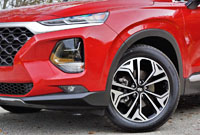
For now, take solace that the outgoing Santa Fe Sport’s six-speed automatic has been replaced by a much more advanced eight-speed auto with standard auto start/stop that shuts the engine off when it would otherwise be idling to reduce emissions and save fuel. Fuel economy is therefore improved over the outgoing model, with the 2.4 FWD base model now rated at 10.7 L/100km in the city, 8.2 on the highway and 9.6 combined compared to the old model’s respective 11.1 city, 8.6 highway and 10.0 combined; the same engine with AWD now capable of a claimed 11.2 city, 8.7 highway and 10.1 combined compared to 12.0, 9.1 and 10.7 respectively with last year’s Santa Fe 2.4 AWD; and finally 12.3 city, 9.8 highway and 11.2 combined for the 2.0-litre turbo instead of 12.5, 9.6 and 11.2 when compared to the same engine in the previous generation. Yes, a bit surprising that the new eight-speed auto and auto start/stop system resulted in zero combined fuel economy improvement with the turbo, but when factoring in that most mileage is done in the city then it can be seen as a positive.
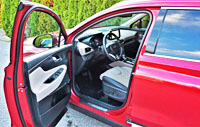
Like the outgoing Santa Fe, the new one features a fully independent suspension with MacPherson struts up front and a multi-link setup in the back, plus stabilizer bars at both ends for improved handling. The steering is motor-driven powered rack and pinion,
Some other changes worth mentioning here in this Garage story include new trim lines, starting with the base Essential, and then upgraded with Preferred, Preferred Turbo, Luxury, and finally the as-tested Ultimate I’m driving this week. First, kudos to Hyundai for ditching the name “Limited” for a trim line they’d sell as many as they could if consumers would buy them, and more praise for not following the status quo and naming their top-line model “Platinum”.
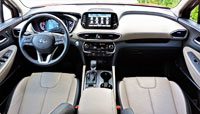
I like the name Essential for a base model, especially one that includes standard heatable front seats and a standard heated steering wheel, not to mention 7.0-inch touchscreen infotainment with Apple CarPlay and Android Auto smartphone integration, a backup camera, dual USB charge ports, Bluetooth, illuminated vanity mirrors, auto on/off projector headlights with LED accents, fog lamps, 17-inch alloy wheels, chrome and body-colour exterior detailing, a leather-wrapped steering wheel and shift knob, two-way powered driver’s lumbar support, 60/40 split folding rear seatbacks with recline, electromechanical parking brake with auto hold, Drive Mode Select with Comfort, Smart, and Sport modes, and much more for just $28,999 plus freight and fees (go to CarCostCanada for detailed pricing, plus rebate info and dealer invoice pricing that could save you thousands).

Ante up $30,199 and you’ll get Hyundai’s suite of SmartSense advanced driver assistive systems including auto high beam assist, adaptive cruise control with stop-and-go, forward collision alert and mitigation with pedestrian detection, lane keeping assist, and Driver Attention Warning.
All-wheel drive costs $2,000 with Essential trim or comes standard with Preferred trim, at which point the SmartSense package is included as well, plus blindspot detection, rear cross-traffic alert with collision avoidance, a rear occupant alert system that remembers if you opened a rear door prior to driving and then reminds that someone or something may still be in back when exiting, and finally safe exit assist that warns of traffic at your side when opening your door, for a total of $35,099.
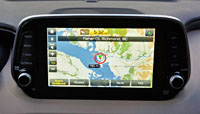
Additional Preferred features include 18-inch alloy wheels, turn signals added to the side mirror housings, proximity keyless access with pushbutton ignition, an auto-dimming rearview mirror, rear parking sensors, a Homelink garage door opener, dual-zone automatic climate control with a CleanAir Ionizer, Predictive Logic and auto defog, BlueLink smartphone telematics, satellite radio, an eight-way powered driver’s seat, rear fore and aft sliding seats, and more. The 2.4-litre base engine is still standard in Preferred trim, but the turbocharged 2.0-litre engine is now a $2,000 option.
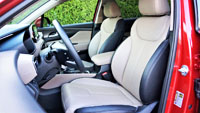
Moving up to $41,899 Luxury trim adds the turbo engine and AWD as standard, plus dark chrome exterior door handles, door scuff plates, LED interior lighting, a 7.0-inch TFT LCD multi-information display within the primary instrument cluster, a powered panoramic sunroof, a 360-degree Surround View parking camera, a deluxe cloth roofliner, leather console moulding, memory, four-way powered lumbar support and an extendable lower cushion for the driver’s seat, an eight-way powered front passenger’s seat, perforated leather upholstery, ventilated front seats, heatable rear seats, rear side window sunshades, a proximity actuated smart liftgate, and more.
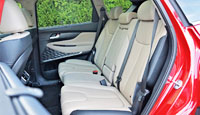
My $44,999 Ultimate trimmed tester included most everything from Luxury trim plus 19-inch alloys, satin exterior trim and door handles, LED headlights, LED fog lamps, LED taillights, rain-sensing wipers, a head-up display that projects key info onto the windscreen ahead of the driver, larger 8.0-inch touchscreen infotainment with navigation and traffic flow including incident data via HD radio, 12-speaker 630-watt Infinity audio with QuantumLogic Surround sound and Clari-Fi music restoration technology, a wireless charging pad, and more.
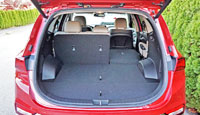
The five-seat Santa Fe boasts interior volume of 4,151 litres (146.6 cubic feet) and cargo capacity measuring 1,016 litres (35.9 cubic feet) behind the second row and 2,019 litres (71.3 cubic feet) with the rear seatback laid flat, a process that is made easier via powered release buttons on the cargo wall.
Being that this Garage review has turned into a comprehensive buyer’s guide, let’s cap it off here for now and leave something for the upcoming review. Make sure you come back soon for the good, bad and ugly experiential commentary…



